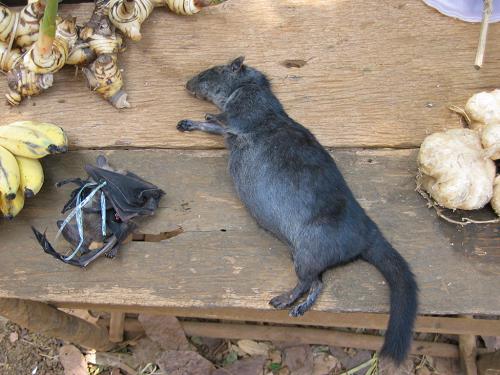Outhai Vongsa
The project will assess the impact of the wildlife trade on the endangered, endemic ‘living fossil’ rodent, the kha-nyou (Laonastes aenigmamus) in Khammouan and Bolikhamxay Provinces, central Lao, with additional information on other endemic and/or conservation dependent, small mammal taxa.

Lao PDR retains internationally important populations of many declining and threatened species, including several recently described taxa. The greatest threat to this wildlife is unsustainable harvest for trade. Blanket bans on harvesting are not viable since the trade is deeply rooted in local culture and the economy. Instead, conservation organisations need to focus on priority species and habitats. WCS Laos recently requested assistance in selecting priority taxa and sites from the National University of Laos (NUoL) in association with the Harrison Institute, UK.
The current project focuses on wildlife harvesting in a ‘globally outstanding’ area for biological distinctiveness, the limestone karst of Khammouan and Bolikhamxay Provinces in the Northern Annamite Moist Forest Ecoregion.
The project’s central objective is to assess the impact of the trade on the Kha-nyou (Laonastes aenigmamus, *Jenkins et al., 2004), with additional information on other endemic rodents and bats recently described (2002-2005) from the region. The Kha-nyou is an endangered species and the only known living representative of an otherwise extinct Miocene family of rodents (11 million years b.p). Almost nothing is known of the species, except that it has a highly restricted distribution and is frequently sold in local markets, together with other endemic and rare taxa.
(*Jenkins, P.D., C.W. Kilpatrick, M.F. Robinson and R.J. Timmins. 2004. Morphological and molecular investigations of a new family, genus and species of rodent [Mammalia: Rodentia: Hystricognatha] from Lao PDR. Systematics and Biodiversity 2(4): 419-454. Erratum: Systematics and Biodiversity 3(3):343).